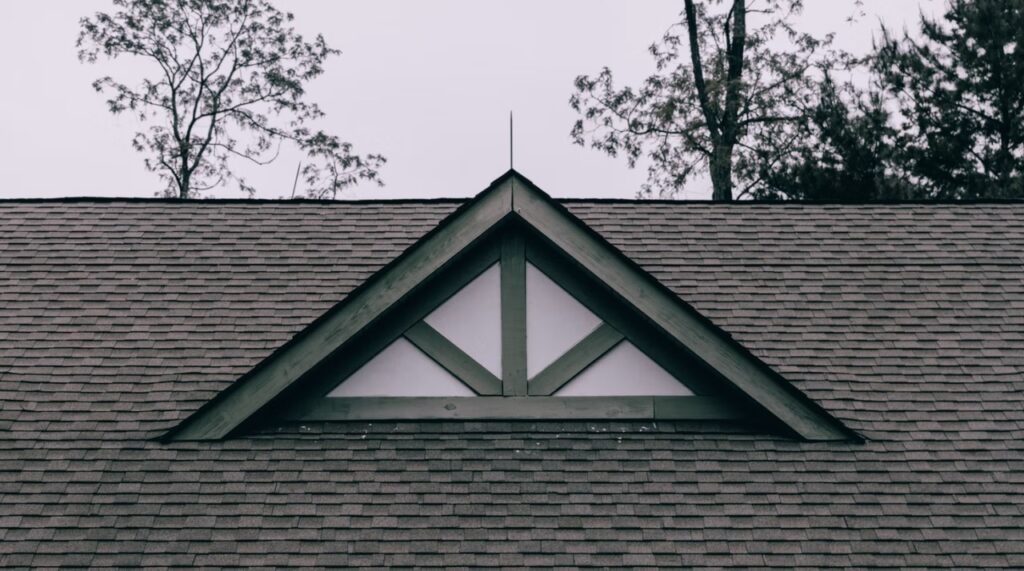The roof (covering and structure) is one of the most important parts of a building. It is the umbrella/defective shield in situ protecting the structure of the property beneath from, at times, the harsh British weather. Should the roof covering fail it can have serious effects on other components/elements of the building. The roof coverings are weather tight and are supported by the roof structure beneath. The load (weight) of the roof covering is distributed across the roof structure. The loads combined can be quite considerable. The roof structure then sits on the walls of the building.
For the roof covering to perform its function as it should, it must be strong, it must have stability and be able to withstand forces like wind, snow, be weather tight, durable in many ways.
Over the years roof structures have changed and developed. Up until the 70’s what is known as ‘cut timbers’ where the norm for most pitched roof structures. The rafters and purlins supported the roof covering and distributed the load of the covering and the structure to the external walls of the property.
From the 70’s the preferred type of roof structure developed to pre-formed truss rafters in most domestic pitched dwellings. The main advantage of these was and is that they are relatively cheap to manufacture, they are relatively light weight, easy to handle onsite placing into position. The manufacture of truss rafters does not require skilled labour as opposed to traditional cut timber roofs, which do require the use of skilled carpenters in their construction.
The truss rafter can span a greater distance than the ‘cut timber’ traditional roof structure. This also cheapens the internal construction as there is no need to build solid supporting walls for load distribution, as there is with traditional roof structures. The trussed rafters a held together with Binders, these keep the structure strong and rigid. Truss rafters (the most common ‘Fink’ design) can span distances of up to 10metres without the need for internal wall/structure support below. There are further advance and intricate truss rafter designs that are known to span greater than 10 metres.
Many older properties with ‘cut timber’ are susceptible to poor design, this being that at the time of construction they were not under the controls that they are today with building regulations.
Design deficiencies are prevalent in the large amount of speculatively built housing constructed during the 19th century’s period of rapid urban expansion. In these properties elements such as the rafters, purlins or other elements of the structure were undersized, or not added at all, therefore the roof structure may be too weak to confidently support the loads imposed by the roof covering. The roof structure can also have added loads such as wind and/or snow. If when these extra loads are applied and there is insufficient lateral restraint within the structure the roof will spread. This is down to the loads in different directions, vertically and horizontally on the rafters, the rafter will then push the external wall outwards. When this happens other elements of the property are under threat and can be compromised.
There are many modern-day issues that because of how we have evolved in our lives and while living within these older properties have further compromised the roof structures. For example, through the 1950 to 1980s we added water tanks and it is possible that timber were cut providing space, we have replaced the relatively light weight slates with concrete tiles and we have branched into the roof space for extra bedrooms, where on occasion the roof structures were not given the respect they deserve in insuring that the works that are being completed do not breach the limits of the roof structure. All of these could lead to serve distortion. Problems caused by the replacement of slate roofs with far heavier concrete tiles have become so common that, since 1991, it has been compulsory to submit structural calculations to building control whenever a roof covering is changed.
There are other factors within roof structures that we have not delved into here, elements such and flashings, gutters, valleys etc therefore the potential for defects in the roof structure, the possibilities are vast.
These are great reasons to conduct a Gold Crest RICS Building Survey or Homebuyer Report before purchasing any property.
Andy Armstrong AssocRICS VRS
Gold Crest Chartered Surveyors



